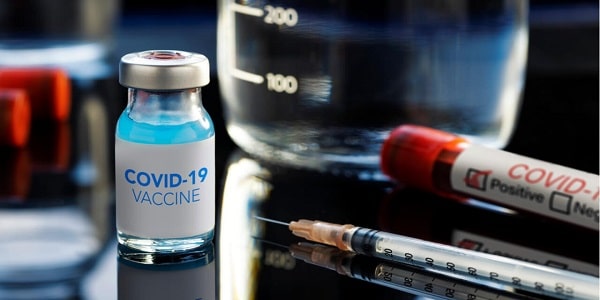These days, when we hear more about the production of corona vaccine and its use in some countries than before, you may be wondering how vaccines are produced in general. In this article, we describe the steps of vaccine production, quoting the official website of the World Health Organization (WHO).
Corona vaccine
What are the ingredients of the vaccine?
Vaccines contain small pieces of the disease-causing agent or designs to make these small pieces. There are also other ingredients in the vaccine that make it safe and effective.
These compounds are present in most vaccines and have been used in billions of vaccine doses for decades. Each component of the vaccine serves a specific purpose, and each component is tested for safety during production.

Steps from production to use of the vaccine
Most vaccines have been used for decades, with millions receiving them safely each year. Like all medicines, every vaccine must be tested extensively and carefully before being placed on the production agenda in any country to make sure it is safe.
Each vaccine under development must first be carefully evaluated to determine which antigen to use to stimulate the immune system. This stage of experiments is not performed on humans. The experimental vaccine is first tested in animals to evaluate its safety and potential for disease prevention. If the vaccine elicits an appropriate immune response, it is then tested in human clinical trials in three steps.
Phase 1 Production of corona vaccine
At this stage, the vaccine is given to a small number of volunteers to assess immunity, establish an appropriate immune response, and determine the appropriate dose. In general, the vaccine is tested on young, healthy adult volunteers at this stage.
Phase 2 Production of Corona vaccine
At this stage, the vaccine is given to several hundred volunteers to further assess safety and its ability to elicit an immune response. At this stage, there are usually several tests to evaluate different age groups and different vaccine formulations. The group that did not receive the vaccine is usually considered a comparison group at this stage.
This group determines whether the changes in the vaccinated group are caused by the vaccine or are accidental.
Phase 3 Production of Corona vaccine
The vaccine is then given to thousands of volunteers – and compared to a similar group of people who did not receive the vaccine but received a comparative product – to determine if they would be able to fight the disease. It is designed to be effective and to be tested on a larger group of people. Most often, the third phase of vaccine production is tested in several countries and different parts of them to ensure that it works on different groups of people. During Phase II and III trials, volunteers and scientists studying the subject do not know which vaccine recipients received which comparative products. This is because knowing this may affect the safety or effectiveness of the vaccine. Once the test is complete and all results are finalized, volunteers and test scientists will be notified of who received the vaccine and who received the comparator.

Eventually
Once the results of all these clinical trials are available, a number of steps are required, including reviewing the effectiveness and safety of regulatory and public health policies. Authorities in each country closely monitor the information and decide whether the vaccine is allowed to be used. Before a vaccine can be approved and included in the national immunization program, it must be proven to be safe and effective in the general population.
After the introduction of the vaccine, more monitoring is done on a continuous basis. There are systems to monitor the safety and effectiveness of all vaccines. This system enables scientists to study the effect of the vaccine and its safety over a long period of time in a large number of people. This data is used to adjust vaccine use policies to optimize their effectiveness and also allows them to evaluate the effectiveness of the vaccine over time. When the vaccine is used, it should be monitored continuously to ensure its safety.
Source:
